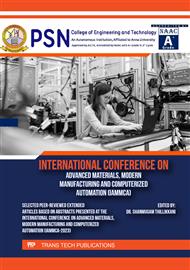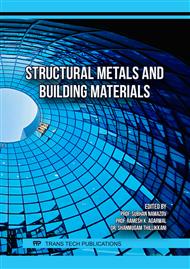p.55
p.63
p.73
p.81
p.93
p.103
p.111
p.117
p.125
An Analysis of the Amount of Energy Used during the Milling of Aluminum 6061 with Higher Performance
Abstract:
Cutting down on energy usage while keeping the material removal rate (MRR) as high as possible is widely acknowledged to be one of the most important goals in the machining industry for a considerable amount of time. So that we can create a forecast model for side-milling machining that makes the most efficient use of the feasible amount of power, the response surface method was utilized. After that, this model was used to establish which parameters should be optimized for the machining process. The response surface approach was applied to investigate the effect that several distinct cutting elements, factors like radial slicing depth, feeding rate, and spindle rpm, all examples (RSM), had on the total power needed throughout the cutting process. The data indicate that the variable known as the feeding rate is the most important factor in the amount of energy consumed. Reduced power consumption is an unavoidable natural byproduct of accelerating cycle durations and increasing feed rates. A radial how deep the wound is in 0.3 millimetres, a feed rate of 6,000 millimetres per inch, and a spindle speed of 12,000 revolutions per minute can produce a minimum power usage of 82.38 kilowatts, as the optimization model indicates. Keywords: Material removal rate, Machining, Power consumption
Info:
Periodical:
Pages:
103-108
Citation:
Online since:
April 2024
Authors:
Keywords:
Price:
Сopyright:
© 2024 Trans Tech Publications Ltd. All Rights Reserved
Share:
Citation:



